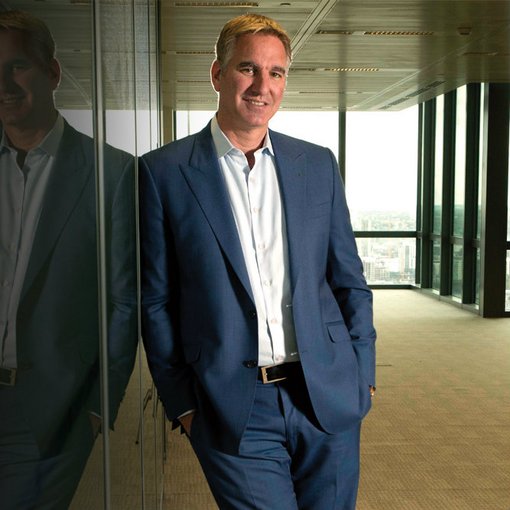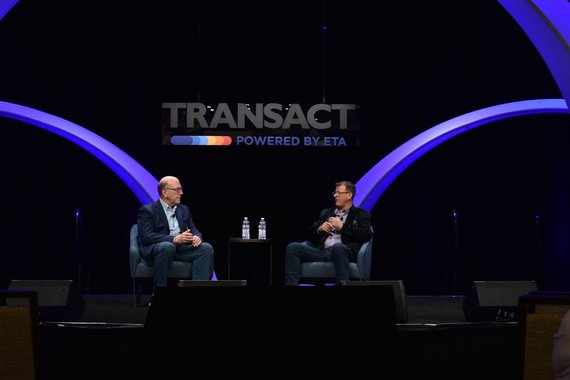
- Four minutes read
What’s next in payments?
Paysafe CEO Joel Leonoff on where the payment industry is heading
Where next for the payments industry? That question is always on the mind of our leadership team — and indeed, on every leadership team in this remarkable industry — at a time of extraordinarily rapid technological and cultural change. After decades of payment models based on personal cheques and credit/debit cards, we now have a huge array of payment tools and methodologies to work with: fast interbank transfers, digital wallets, prepaid cards and vouchers, mobile P2P payments apps, slimline merchant hardware, and many more besides.
Already, many of these are finding a mainstream place in the world. Digital wallets alone are become rapidly entrenched in the consumer landscape; Paysafe customers now hold more than a billion dollars in our wallets. Prepaid vouchers, too, have taken on a life of their own around the world, with Paysafe’s own offering, paysafecard, on sale at more than half a million outlets and accepted by thousands of online merchants. We’re trusted to provide payments processing for some of Europe’s most important local brands and organisations. By any standards, we seem to be performing well in a highly competitive and rapidly changing market.
So where’s the issue, you might ask?
The big issue for us and everyone else in the industry is staying relevant. With so many options to choose from, customers can go almost anywhere else at any time merely by acquiring a new digital wallet or downloading a new app. That’s a particular problem for banks, who face disintermediation from a huge raft of new players — not least giants such as Amazon, Google and Facebook — threatening to weaken their hold on the end-user relationship. But it’s a problem for pure payment players too, who are faced with the threat of bold, agile fintech startups with little to lose and everything to gain. And rapidly evolving legislation, such as the forthcoming PSD2 initiative, is opening many new doors to would-be challenger brands, forcing the whole industry to be constantly alert and engaged with a vastly complex regulatory framework.
Keeping our brands relevant and appealing in the face of these new payments industry pretenders is an immense challenge requiring constant vigilance and endless imagination. It’s hard to just show up and dominate a whole industry, especially if you’re a startup — one reason why there’s still a lot of complacency from banks and other established industry players. But the rise of companies like Stripe, just five years old and already claiming over 100,000 business customers, shows that the threat is a real one.
Paysafe is not one of the organisations resting on its laurels. Despite our size and scale, we know that we can never stand still; we’re fully aware of the disruptive power of startups. But we also know how hard it is for small organisations to get a seat at the crowded payments table. We’ve spent a long time building a worldwide customer base and developing products that work across multiple territories, currencies and platforms; a non-trivial exercise in the challenging commercial environment of the last decade. In 2015, we integrated all our global brands under one roof as part of our strategy to provide a single, unified front to the market. Now, we’re building a unified technology platform that ties these brands together seamlessly — and, crucially, which gives us a solid foundation for new kinds of innovation and integration. In the meantime, we’re constantly mindful of three key challenges: the unstoppable growth of mobile, the blurring of lines across the digital and physical worlds and a growing hunger for analytics.
Three key challenges
Increasingly, our products and services are geared towards mobile-initiated transactions. We’re continuing to invest in our digital wallet mobile apps, as well as smart new mobile-based development on our paysafecard product. We’re exploring many new ways to really add value across these services, from additional transaction information within the payment app, new budgeting features and integrated loyalty schemes; all things that will make mobile transactions much more useful and convenient for customers.
This is not just about conventional m-commerce. Everywhere we look, we’re seeing new mobile trends and opportunities such as so-called commuter commerce, now responsible for nearly a fifth of all mobile purchases. That’s the motivation behind our focus on the blurred digital/physical boundaries. Today, people increasingly want to buy things on their way to work and pick them up locally, not wait days for delivery; the rationale behind our new GOLO app, which is already stimulating growth in local communities by giving merchants and consumers more flexible and powerful tools for doing business together. With GOLO, consumers can find, pay for and arrange collection of goods and services wherever they happen to be; not just where merchants would like us to be at a set time and place
Finally, we’re responding to our merchants’ need for much broader and deeper insight into their customers, by providing new analytics tools that give them a wealth of data for streamlining their businesses. That means better information about exactly how and where customers want to pay, what the drivers and barriers to successful transactions really are and better predictive tools for anticipating trends.
The under-served markets
Today, most of these areas remain under-served. That plays to one of Paysafe’s most important core strengths — our historical focus on under-served markets. We’ve been finding innovative solutions to meet the specific needs of those markets for a long time, a fact that we think makes us exceptionally well positioned to capitalise on this exciting period of change in global financial services. As we continue on our mission to build a truly data-driven, multi-channel unified product set, we’re also opening up opportunities that we think few organisations around the world can fully exploit as effectively as we can. There will be a lot for us to talk about in 2017.




